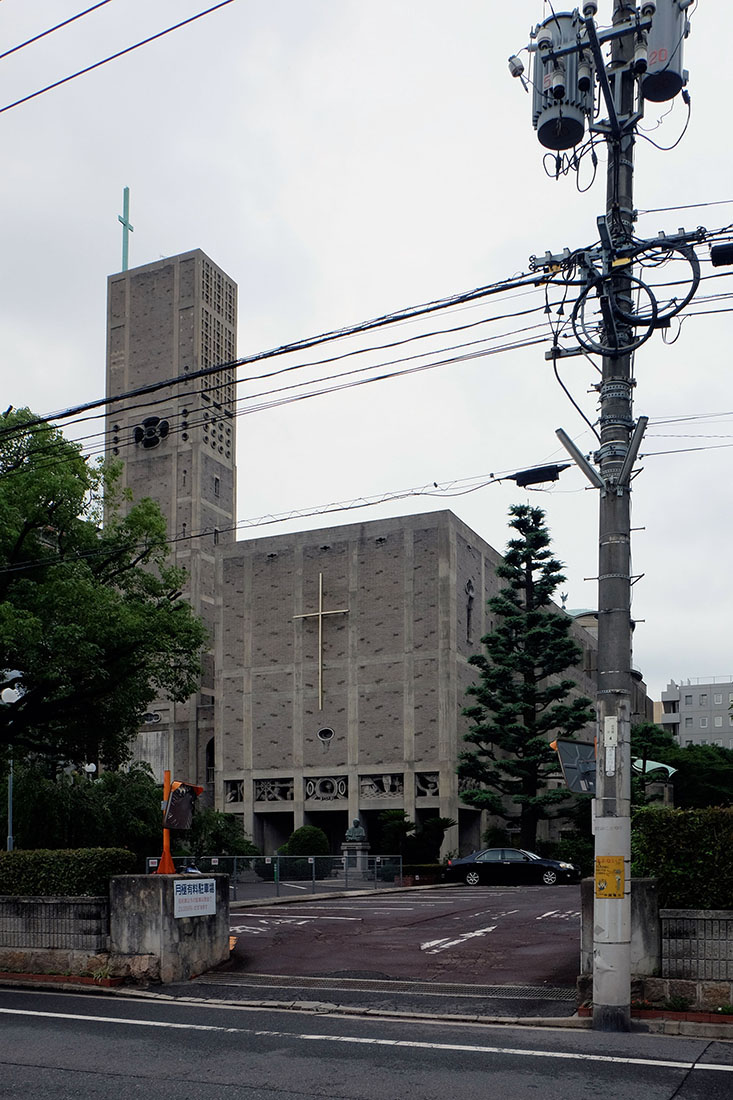 |
 |
 |
 |

World Peace Memorial Cathedral
4-29, Nobori-cho, Naka-ku, Hiroshima
1953
|
The
original catholic cathedral in this location was destroyed in the
disastrous atomic bomb explosion in 1945. A design competition was launched in
1947
to find an architect for its replacement. A total of 177 designs were submitted from well known Japanese architects such as Kenzo Tange and Kunio Maekawa and others. The competition finished without declaration of an overall winner. In the end, Togo Murano, who was one of the jurors, designed the new World Peace Memorial Cathedral. Togo Murano designed and completed many outständig works, representative for contemporary Japanese architecture. The Memorial Cathedral, his first major building after the war, is one of his finest designs. This building is considered to be a modern building in general terms. It is remarkable, that there are many features or qualities in this building whiche relate to various precedents in Western architecture. The volumetric treatment of the design was influenced by Auguste Perret, in its appearance, the building shows certain affinity with the Nordic or Scandinavian National Romanticism. On the oter side the inclusion of a circular dome over the sanctuary and small cylindrical chapels on either side of the main volume remember the Byzantine architecture. The post-and-beam concrete frame with internal panels is reminiscent of traditional Japanese architecture as are the shapes of the windows penetrating the tower. The brick infills in this case were made from earth containing ashes of the burnt city from the atomic bomb and are laid so that their rough surfaces cast shadows across the facade. The facade is animated by the interplay of light and shadow as well as the feeling for the materials. The sculptures above the main door were designed by the Architect Kenji Imai. The powerful Romanesque-like interior is emphasized by a spectrum of subdued light. This Building is registered by DoCoMoMo-Japan as one of the 100 best representatives of modern architecture in Japan, and the is considered to be on of the most important landmarks in Hiroshima. The Peace Memorial Cahtedral became a seminal work for Togo Murano. After completing this building, he undertook several projects of religious buildings and converted to Catholicism later in life. The construction system of concrete beams and brick infills later became much used by Togo Murano, for example in the Yonago Public Hall, the Yokohama City Hall, the Round Library at Kansai University and the Department of Literature Building at the Waseda University. |
